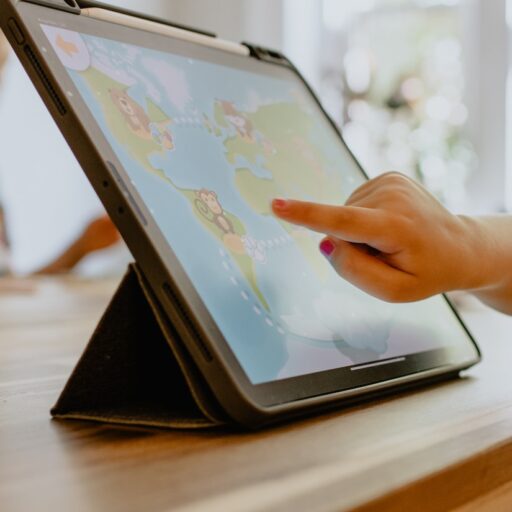Support our educational content for free when you purchase through links on our site. Learn more
[2023] What Age Should a Child Have a Tablet?
Quick Answer
The appropriate age to introduce a tablet to a child is around 2 to 3 years old. At this age, children start to develop fine motor skills and cognitive abilities that allow them to interact with a tablet. However, it’s important to remember that every child is different, and parents should consider their child’s individual needs and development before introducing a tablet.
✅ CHECK PRICE on:
Quick Tips and Facts
- Tablets can be a valuable educational tool for children, providing access to educational apps, interactive learning games, and age-appropriate content.
- Parental supervision and involvement are crucial when a child is using a tablet. Parents should set limits on screen time and ensure that the content is appropriate for their child’s age.
- Not all apps are created equal. It’s important to choose educational apps that are engaging, interactive, and aligned with your child’s learning goals.
- Tablets can help children with special needs by providing assistive technology and communication tools.
- Tablets can be used to connect with distant relatives through video calls and messaging apps, fostering social connections.
- Tablets can provide a distraction during long car rides or doctor’s appointments, keeping children engaged and entertained.
- Tablets can foster creativity through drawing and art apps, allowing children to explore their imagination.
- Tablets can be a tool for independent learning as children can access educational resources and practice skills at their own pace.
Background
The use of tablets by children has become increasingly common in recent years. Tablets offer a wide range of educational and entertainment opportunities for children, but it’s important to consider the appropriate age to introduce them. The American Academy of Pediatrics recommends waiting until after 2 years old to introduce a tablet to a child, while PBS suggests waiting until preschool.
When Should You Introduce a Tablet to Your Child?
Introducing a tablet to a child at the right age can provide numerous benefits, but it’s essential to consider their developmental stage and individual needs. Here are some factors to consider when deciding when to introduce a tablet to your child:
1. Developmental Milestones
Around 2 to 3 years old, children start to develop the necessary fine motor skills and cognitive abilities to interact with a tablet. They can swipe, tap, and explore the touchscreen interface. This age range is also when children begin to show an interest in technology and mimic their parents’ device usage.
2. Individual Readiness
Every child is unique, and their readiness to use a tablet may vary. Some children may show an early interest in technology and demonstrate the ability to navigate a tablet at a younger age, while others may need more time to develop the necessary skills. It’s important to observe your child’s behavior and assess their readiness before introducing a tablet.
3. Parental Involvement
Parental involvement is crucial when a child starts using a tablet. Parents should actively engage with their child during tablet time, guiding them through educational apps and monitoring their screen time. By being actively involved, parents can ensure that the tablet is used as a tool for learning and entertainment, rather than as a passive babysitter.
4. Content Selection
Choosing age-appropriate and educational content is essential when introducing a tablet to a child. Look for apps and games that align with your child’s interests and learning goals. There are many educational apps available that can help children develop essential skills such as literacy, numeracy, problem-solving, and creativity.
5. Screen Time Limits
Setting limits on screen time is crucial to ensure a healthy balance between digital and offline activities. The American Academy of Pediatrics recommends limiting screen time to 1 hour per day for children aged 2 to 5 years old. However, it’s important to note that these guidelines are not set in stone and should be adjusted based on your child’s individual needs and circumstances.
Pros and Cons of Tablets for Children
Tablets offer a range of benefits for children, but it’s important to consider the potential drawbacks as well. Here are some pros and cons to consider:
Pros of Tablets for Children
- Educational Opportunities: Tablets provide access to a wide range of educational apps, interactive learning games, and age-appropriate content that can enhance a child’s learning experience.
- Engaging and Interactive: Many educational apps are designed to be interactive and engaging, making learning fun and enjoyable for children.
- Portability: Tablets are lightweight and portable, making them convenient for travel and on-the-go learning.
- Assistive Technology: Tablets can be a valuable tool for children with special needs, providing assistive technology and communication tools.
- Parental Controls: Most tablets offer built-in parental control features that allow parents to monitor and control their child’s screen time and content access.
Cons of Tablets for Children
- Screen Time: Excessive screen time can have negative effects on a child’s physical and mental health. It’s important to set limits and ensure a healthy balance between screen time and other activities.
- Quality of Content: Not all apps are created equal. It’s important to choose educational apps that are age-appropriate, engaging, and aligned with your child’s learning goals.
- Tech Addiction: Excessive screen time can lead to tech addiction, where children become overly dependent on digital devices and show signs of withdrawal when separated from them. It’s important to monitor and regulate screen time to prevent addiction.
- Social Interaction: Excessive screen time can limit opportunities for face-to-face social interaction and physical play, which are essential for a child’s social and emotional development.
Toddlers and Tablets
Toddlers, typically aged 1 to 3 years old, are at a stage of rapid development and exploration. While tablets can offer educational benefits for toddlers, it’s important to use them in moderation and under parental supervision. Here are some tips for introducing tablets to toddlers:
- Choose Age-Appropriate Apps: Look for apps that are specifically designed for toddlers, focusing on early learning skills such as colors, shapes, numbers, and basic vocabulary. Avoid apps with excessive advertisements or in-app purchases.
- Engage in Co-Play: Co-play with your toddler by using the tablet together. This allows you to guide and interact with your child during tablet time, making it a shared learning experience.
- Set Screen Time Limits: Limit screen time to short sessions of 10-15 minutes, gradually increasing the duration as your child gets older. The American Academy of Pediatrics recommends no screen time for children under 18 months old, except for video chatting.
- Encourage Offline Play: Balance tablet time with offline play and other activities that promote physical movement, creativity, and social interaction.
- Monitor Content: Regularly review the apps and content your toddler is accessing on the tablet. Ensure that the content is age-appropriate and aligned with your child’s learning goals.
FAQ

What is the average age a child gets a tablet?
The average age at which children are introduced to tablets is around 2 to 3 years old. However, it’s important to consider your child’s individual readiness and developmental milestones before introducing a tablet.
Read more about “… The Best Tablets for 8-Year-Olds: Expert Recommendations”
How long should a 7-year-old play on a tablet?
The American Academy of Pediatrics recommends limiting screen time to 1 hour per day for children aged 6 to 10 years old. However, it’s important to adjust the screen time limits based on your child’s individual needs and circumstances.
Read more about “How Long Should a Child Be on a Tablet? …”
How long should an 8-year-old be on a tablet?
The American Academy of Pediatrics recommends limiting screen time to 1 hour per day for children aged 6 to 10 years old. However, it’s important to adjust the screen time limits based on your child’s individual needs and circumstances.
Read more about “… Are Tablets Good for Kids Learning?”
Can a 10-year-old have tablets?
Yes, a 10-year-old can have a tablet. However, it’s important to set limits on screen time and ensure that the content is age-appropriate and aligned with your child’s learning goals.
Read more about “… Tablets for Kids on Sale: The Ultimate Guide | Kids Tablets™”
Conclusion
Introducing a tablet to a child at the appropriate age can provide numerous educational and entertainment opportunities. Around 2 to 3 years old is a suitable age to introduce a tablet, as children start to develop the necessary fine motor skills and cognitive abilities to interact with a tablet. However, it’s important to consider your child’s individual readiness, set limits on screen time, and choose age-appropriate and educational content.
When selecting a tablet for your child, consider options such as Kid-Friendly Tablets and Educational Tablets that offer parental control features and age-appropriate content.
Remember, parental involvement and supervision are crucial when a child is using a tablet. Engage with your child during tablet time, set limits, and ensure a healthy balance between screen time and other activities.
Recommended Links
- Kid-Friendly Tablets | Educational Tablets | Tablet How-To Guides | Tablet Comparisons
- Are Tablets Good for Kids Learning?
✅ CHECK PRICE on:




